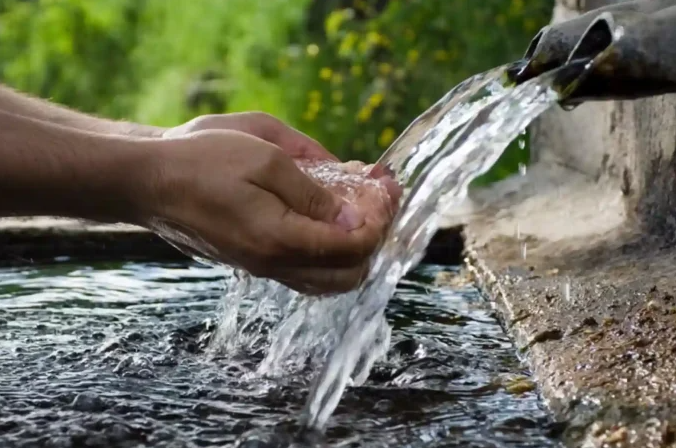Introduction
Access to clean water is crucial for communities worldwide. In Uganda, Hallow Wells Technology has emerged as a sustainable solution to water scarcity. This guide explores the significance, implementation, and benefits of this technology.
What is Hallow Wells Technology?
Hallow Wells Technology involves the construction of shallow wells to access groundwater. These wells are typically less than 30 meters deep and are ideal for areas with high water tables.
Importance of Hallow Wells Technology in Uganda
- Cost-Effective: Shallow wells are cheaper to construct and maintain compared to deep wells.
- Accessibility: They provide a reliable water source for rural and semi-urban communities.
- Sustainability: Utilizing local materials and labor makes this technology sustainable.
Implementation Process
Site Selection
Choosing the right location is critical. Factors to consider include:
- Water Table Depth: Areas with a high water table are ideal.
- Soil Type: Sandy and loamy soils are preferable.
- Proximity to Communities: Wells should be easily accessible to the target population.
Construction Steps
- Surveying: Conduct a hydrogeological survey to determine the best site.
- Drilling: Use manual or mechanized drilling methods.
- Casing and Screening: Install casing pipes to prevent collapse and screens to filter water.
- Pumping System: Install a hand pump or solar-powered pump.
Maintenance and Management
Regular Maintenance
- Cleaning: Regularly clean the well to prevent contamination.
- Inspection: Periodically inspect the well structure and pump.
- Repairs: Address any damages promptly to ensure continuous water supply.
Community Involvement
- Training: Educate local communities on well maintenance.
- Committees: Form water user committees to oversee the well’s operation.
Benefits of Hallow Wells Technology
- Health Improvement: Access to clean water reduces waterborne diseases.
- Economic Growth: Saves time and resources spent on fetching water, allowing for economic activities.
- Environmental Protection: Reduces the need for surface water extraction, preserving natural ecosystems.
Challenges and Solutions
- Seasonal Variations: Water levels may fluctuate with seasons.
- Contamination Risks: Wells can be contaminated if not properly maintained.
Solutions
Seasonal Monitoring: Regularly monitor water levels and quality.
Protective Measures: Implement measures like fencing and proper drainage to protect the well.
Success Stories
Lwengo District: Implementation of shallow wells has significantly improved water access.
Kampala Suburbs: Community-managed wells have proven effective in providing sustainable water supply.
What are the challenges faced during well construction?
Constructing wells, especially shallow wells like those used in Hallow Wells Technology in Uganda, can present several challenges:
Common Challenges
Water Table Depth: Finding areas with a sufficiently high water table can be difficult.
Soil Type: Certain soil types, like clay or rocky soils, can complicate drilling.
Technical Difficulties
- Drilling Equipment: Access to appropriate drilling equipment can be limited, especially in remote areas.
- Casing and Screening: Proper installation of casing and screens is crucial to prevent well collapse and contamination.
Seasonal Variations
- Water Levels: Water tables can fluctuate with seasons, affecting the well’s reliability.
- Weather Conditions: Adverse weather can delay construction and affect the quality of the well.
Contamination Risks
- Surface Contaminants: Wells can be contaminated by surface runoff if not properly protected.
- Maintenance: Lack of regular maintenance can lead to contamination and reduced water quality.
Community Involvement
- Training: Ensuring that local communities are adequately trained in well maintenance can be challenging.
- Management: Establishing effective water user committees requires time and effort.
Solutions
- Hydrogeological Surveys: Conduct thorough surveys to identify the best sites for well construction.
- Proper Equipment: Ensure access to the necessary drilling and construction equipment.
- Seasonal Monitoring: Regularly monitor water levels and quality to adapt to seasonal changes.
- Protective Measures: Implement measures like fencing and proper drainage to protect the well from contamination.
- Community Training: Provide comprehensive training to local communities on well maintenance and management.
Addressing these challenges effectively can lead to the successful implementation of Hallow Wells Technology in Uganda, ensuring a reliable and sustainable water supply for communities.
How can communities get involved in implementing this technology?
Community involvement is crucial for the successful implementation and sustainability of Hallow Wells Technology in Uganda. Here are some ways communities can actively participate:
Steps for Community Involvement
1. Awareness and Education
Workshops and Seminars: Organize educational sessions to inform community members about the benefits and maintenance of shallow wells.
Information Campaigns: Use local media, posters, and community meetings to spread awareness.
2. Participatory Planning
- Community Meetings: Involve community members in the planning process to ensure the well meets their needs.
- Feedback Mechanisms: Establish channels for community feedback during the planning and construction phases.
3. Local Labor and Resources
- Volunteering: Encourage community members to volunteer in the construction process.
- Utilizing Local Materials: Use locally available materials to reduce costs and increase community ownership.
4. Training and Capacity Building
- Maintenance Training: Provide training sessions on well maintenance and repair.
- Management Skills: Train community leaders in managing water resources and forming water user committees.
5. Formation of Water User Committees
- Committee Roles: Establish committees responsible for overseeing the well’s operation and maintenance.
- Regular Meetings: Hold regular meetings to discuss issues and plan maintenance activities.
6. Monitoring and Evaluation
- Regular Inspections: Conduct periodic inspections to ensure the well is functioning properly.
- Community Reporting: Encourage community members to report any issues or irregularities.
7. Financial Contributions
- Fundraising: Organize fundraising events to support the construction and maintenance of the well.
- User Fees: Implement a small user fee to fund ongoing maintenance and repairs.
Benefits of Community Involvement
- Ownership and Responsibility: When communities are involved, they take greater ownership and responsibility for the well.
- Sustainability: Active participation ensures the well is maintained and used sustainably.
- Empowerment: Involvement in the project empowers community members and builds local capacity.
By engaging in these activities, communities can ensure the successful implementation and long-term sustainability of Hallow Wells Technology in Uganda. This collaborative approach not only improves access to clean water but also strengthens community bonds and resilience.
Challenges related to community participation in well projects
Addressing challenges related to community participation in well projects is essential for their success and sustainability. Here are some strategies to overcome these challenges:
Strategies to Enhance Community Participation
1. Building Trust and Relationships
- Engage Early: Involve community members from the very beginning of the project to build trust.
- Transparent Communication: Maintain open and honest communication about project goals, processes, and benefits.
2. Education and Awareness
- Information Sessions: Conduct regular workshops and seminars to educate the community about the importance of the project.
- Success Stories: Share success stories from other communities to inspire and motivate participation.
3. Inclusive Planning
- Participatory Approach: Use participatory planning methods to ensure all community members, including marginalized groups, have a voice.
- Feedback Mechanisms: Establish channels for continuous feedback and incorporate community suggestions into the project.
4. Capacity Building
- Training Programs: Offer training on technical skills, maintenance, and management to empower community members.
- Leadership Development: Identify and train local leaders to champion the project and mobilize the community.
5. Incentives and Recognition
- Incentives: Provide small incentives for active participation, such as recognition awards or certificates.
- Public Acknowledgment: Acknowledge and celebrate the contributions of community members publicly.
6. Addressing Concerns and Barriers
- Identify Barriers: Conduct surveys or focus groups to understand the barriers to participation.
- Provide Solutions: Address barriers by providing solutions such as transportation for meetings, childcare during training sessions, or flexible meeting times.
7. Sustainable Management Structures
- Water User Committees: Form committees with clear roles and responsibilities for managing the well.
- Regular Meetings: Hold regular meetings to discuss issues, plan activities, and ensure accountability.
8. Financial Support
- Fundraising: Organize community fundraising events to support the project.
- Microfinance Options: Explore microfinance options to help community members contribute financially.
Benefits of Overcoming Participation Challenges
- Enhanced Ownership: Increased participation leads to a greater sense of ownership and responsibility.
- Sustainability: Active community involvement ensures the long-term sustainability of the well.
- Empowerment: Empowering community members builds local capacity and resilience.
By implementing these strategies, communities can overcome challenges related to participation and ensure the successful implementation and sustainability of Hallow Wells Technology in Uganda. This collaborative approach not only improves access to clean water but also strengthens community bonds and resilience.
Conclusion
Hallow Wells Technology in Uganda offers a practical and sustainable solution to water scarcity. By involving local communities and ensuring proper maintenance, this technology can provide long-term benefits. Embracing this approach can lead to improved health, economic growth, and environmental protection.





